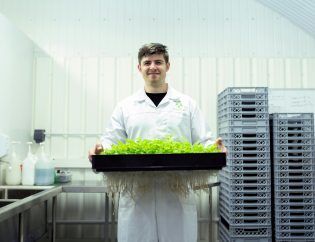
The constant action of atmospheric agents is a real problem for every kind of building, both for housing and public infrastructure.
Rain, wind, snow but also sudden changes in temperature and variations in the humidity percentage deteriorate the buildings of our cities.
Some of these damages are immediately visible, while others, due to particular chemical reactions, can go unnoticed until it is too late.
To reduce the risk of collapse and save on renovation costs, it is good to carry out precise tests on building materials in order to guarantee their resistance and durability against these processes.
An essential process to keep under control is carbonation.
What is carbonation?
Carbonation is the chemical process by which a substance, in the presence of carbon dioxide CO2, gives rise to the formation of carbonates.
On some building materials, such as lime or plain concrete, carbonation has neutral if not positive effects.
Different story for reinforced concrete: carbonation is the first cause of deterioration for such material, triggering the corrosion of the reinforcement bars.
The carbon dioxide present in the atmosphere, acting from the outermost layers towards the innermost ones, affects the steel structure, endangering the solidity of the entire building.
Reinforced concrete is one of the most common building materials in our cities and preventing the phenomenon of carbonation with specific tests has become necessary to ensure the safety of buildings.
Online Configurator
Build from scratch your Climate Chamber with CO2 Control
What factors cause carbonation of building materials?
To understand how much our structure will be affected by carbonation, two variables must be taken into account: the environmental conditions and the characteristics of our concrete.
The environmental conditions that affect the carbonation of concrete are:
- The humidity
- The temperature
- The concentration of CO2 in the air
The characteristics of the concrete to be taken into consideration are:
- The water/cement ratio
- The type of concrete
- Porosity
- Seasoning
- The implementation
From the interaction of these variables, we can predict if and when a carbonation process will take place. But how to do it?
Perform
Climate Stress
Discover the new series of Climate Chambers with CO2 Control
How to perform tests on building materials: the climatic chamber
To perform carbonation tests on building materials it is necessary to have a climatic chamber.
A climatic chamber is a technological tool capable of performing scientific tests on a variety of materials, including construction materials, in a controlled environment.
In particular, the stability chamber is the perfect tool to reproduce a wide range of humidity levels and temperature changes.
In addition, the stability chamber can be modified and equipped for specific needs. For example, to perform tests on concrete, the climatic chamber is equipped with a flooding system of tanks, in order to test the effect of any type of environmental condition on the material in question.
The FDM chamber with CO2 control
FDM has been manufacturing and marketing climatic chambers in the materials testing business since 1949.
The FDM chambers with CO2 control allow the control of carbon dioxide inside the test cabinet, according to current regulations, such as EN 12390-2.
The CO2 control can be applied, with different configurations, either to stillFACE type controllers, for constant temperature, or revoFACE, for automatic temperature cycles.
Whatever need you have regarding material testing, FDM will have the right solution for your situation.
Would you like to receive a quote or do you have questions about the product?
Contact us to receive more information about this Product.



